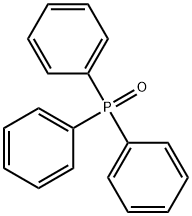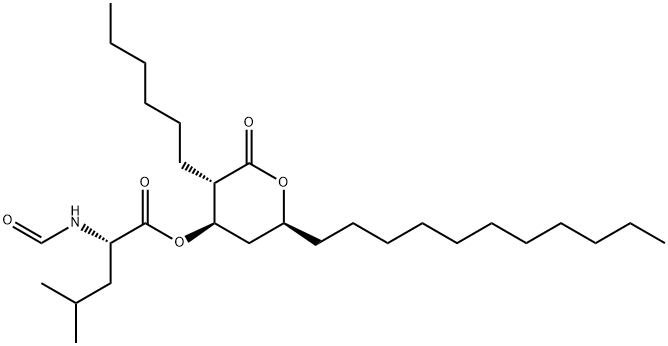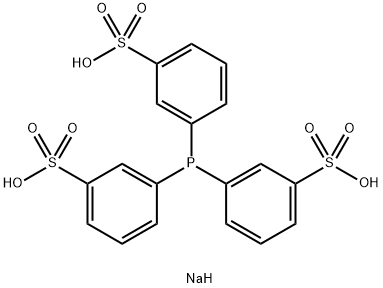Triphenylphosphine oxide , 98% , 791-28-6
Synonym(s):
TPO;TPPO;Triphenylphosphine oxide;Triphenyl phosphorus oxide;Triphenylphosphine monoxide
CAS NO.:791-28-6
Empirical Formula: C18H15OP
Molecular Weight: 278.28
MDL number: MFCD00002080
EINECS: 212-338-8
| Pack Size | Price | Stock | Quantity |
| 25G | RMB23.20 | In Stock |
|
| 100G | RMB47.20 | In Stock |
|
| 250g | RMB111.20 | In Stock |
|
| 500G | RMB196.80 | In Stock |
|
| 2.5kg | RMB536.00 | In Stock |
|
| others | Enquire |
PRODUCT Properties
| Melting point: | 150-157 °C(lit.) |
| Boiling point: | 360 °C |
| Density | 1,212 g/cm3 |
| bulk density | 400-450kg/m3 |
| vapor pressure | <1 hPa (50 °C) |
| Flash point: | 180 °C |
| storage temp. | Store below +30°C. |
| solubility | methanol: 25 mg/mL, clear |
| form | Crystalline Powder or Flakes |
| color | White to pink-brown |
| Specific Gravity | 1.212 |
| Water Solubility | slightly soluble |
| Hydrolytic Sensitivity | 4: no reaction with water under neutral conditions |
| BRN | 745854 |
| LogP | 2.8 |
| CAS DataBase Reference | 791-28-6(CAS DataBase Reference) |
| NIST Chemistry Reference | (C6H5)3PO(791-28-6) |
| EPA Substance Registry System | Triphenylphosphine oxide (791-28-6) |
Description and Uses
Triphenylphosphine oxide (TPPO) is a coordinating solvent used to activate crystallization of chemical compounds. It has been used in flame retardant applications, as an epoxy cure catalyst, and more recently, to produce nanostructures.
Triphenylphosphine oxide can be used:
As a catalyst in Appel-type chlorination reaction of acyclic primary and secondary alcohols.
As a catalyst in stereoselective poly and dibromination of α,β-unsaturated esters and β,γ-unsaturated α-ketoester compounds.
As a promotor in the diastereoselective synthesis of α-ribofuranosides through ribofuranosylation of alcohols with ribofuranosyl iodides.
Safety
| Symbol(GHS) |  GHS05 |
| Signal word | Warning |
| Hazard statements | H290 |
| Precautionary statements | P234-P390 |
| Hazard Codes | Xn,Xi |
| Risk Statements | 22-36/37/38-52/53 |
| Safety Statements | 26-61-36 |
| RIDADR | 3077 |
| WGK Germany | 2 |
| RTECS | SZ1676000 |
| Autoignition Temperature | 590 °C |
| TSCA | Yes |
| HazardClass | 9 |
| PackingGroup | III |
| HS Code | 29310095 |
| Toxicity | LD50 orally in Rabbit: 685 mg/kg |






